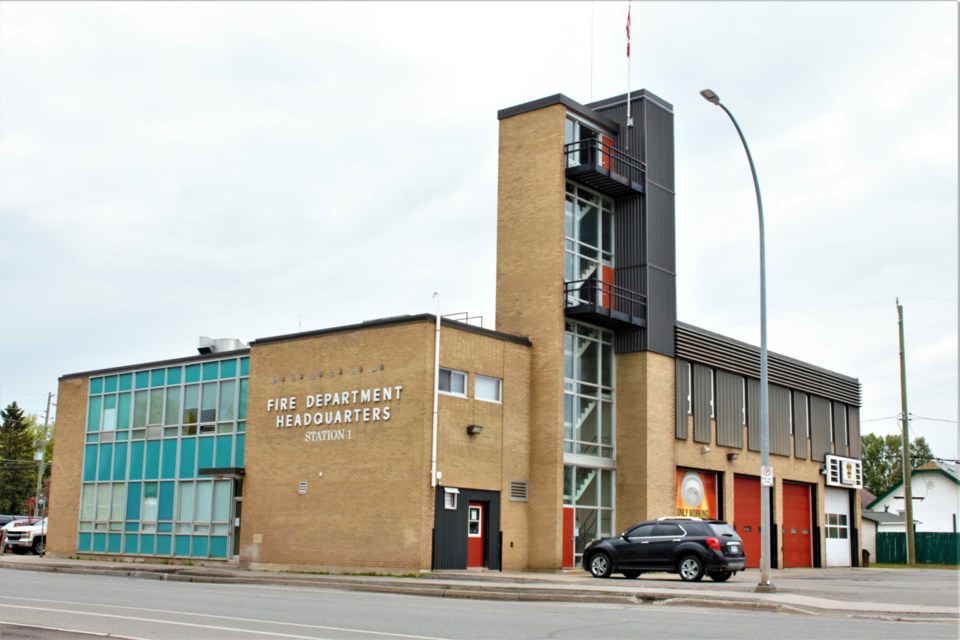THUNDER BAY – Thunder Bay’s fire chief is throwing cold water on the idea of cutting the number of local fire stations, a possibility previously raised by consultants.
Chief Greg Hankkio said a detailed analysis of call volumes, response times, and areas at highest risk for fire showed consolidating Thunder Bay Fire Rescue's two downtown stations into one central location would bring unacceptable risks.
“Those are our two high call volume areas, that’s where our highest risk is within the municipality,” he said. “So an amalgamation of those two stations and moving them out of the downtown cores, in my view as the fire chief, presents significant risk to the municipality and to the firefighters in this city.”
On Monday, city council will debate Hankkio’s recommendation to stick with the status quo, along with smaller recommendations to bump spending on fire station upkeep, and approve a plan to lease space for TBFR administrative staff.
Hankkio's report on the issue addresses a recommendation in the city’s master fire plan, passed in 2020, to consider consolidating stations, particularly those in the downtowns.
In that document, consultants Emergency Management & Training Inc. didn’t recommend consolidation, but said it should be explored.
Consolidation would bring “substantial” up-front costs but result in long-term savings, they suggested. However, they also indicated “the only tangible savings” from closing fire stations would be in utilities and maintenance, amounting to just $10,000 to $20,000 a year.
Hankkio's review concludes TBFR should maintain all eight of its current stations, and plan to replace the Vickers station in 2032, when it will reach end of life according to the city’s facility’s division.
The cost to replace the TBFR’s Vickers headquarters, which also includes space for administrative staff, is pegged at $16.7 million in 2022 dollars by city staff - much higher than estimates in the 2020 master fire plan.
Hankkio's report presents evidence that the two downtown cores account for the greatest number of fires causing $10,000 or more in damage.
Consolidating the downtown stations into a larger one in the Balmoral and Central area, one option proposed by consultants, would improve response times for the intercity and Westfort areas (1,812 residents), but worsen them in the north core, east end, and Northwood (7,546 residents), the analysis found.
The fire department says it can currently provide four-minute response time coverage to 87,000 people in the city.
“Anything other than the status quo option" would lower that number, Hankkio’s report concluded, using GIS mapping data to compare the status quo against three other scenarios consultants put forward.
Those scenarios included:
- Realignment Option 1: Consolidate Vickers and Water Street stations into one station in the Central Avenue/Balmoral Street area; relocate Churchill Drive station to Victoria Avenue/Tarbutt Street area
- Realignment Option 2: Same as Realignment Option 1, but without relocation of Churchill Drive station
- Realignment Option 3: Turn Churchill Drive station into an EMS station, with firefighters there assigned to medical response
The city’s most recent citizen satisfaction survey indicates residents are happy with the current model, Hankkio said, with 94 per cent of residents expressing satisfaction with fire services, the highest for any city service.
“Really what we’re suggesting to council is we don’t need to do anything right now, other than invest a little bit more money… to maintain the status of our fire stations,” he said. “We don’t need to ask council for millions of dollars at this point in time."
Replacing Vickers in 2032 also gives the city more time to gather financing, he said.
The $16.7 million estimate for Vickers replacement in Hankkio's report is a substantial increase from figures in the 2020 master fire plan.
At that time, Emergency Management & Training Inc. estimated replacing Vickers with a smaller station, without administrative space, would cost $2 million.
Building a new, larger fire station consolidating both Vickers and Water Street, and offering administrative space, was pegged at just $10 million.
The city’s director of facilities, Gerry Broere, said the $16.7 million estimate is based on a standard per-square foot amount.
The facilities division also recommended adding $65,000 per year to its budget to make up for a shortfall in maintenance of local fire stations, starting in 2023.
To cover both upkeep and financing of future station replacements including Vickers, the city would need to budget $2.74 million a year, staff estimated.
The request to lease space for TBFR administrative staff will also be discussed by council Monday.
The department currently has 17 administrative staff members working in a space designed for far fewer, Hankkio said.
In a TBnewswatch visit, the fire chief demonstrated a noticeably sloping floor and limited space that forces staff to also use their offices for storage.
The cost to lease space is estimated at $75,000 to $160,000 per year. Renovations to "up-fit" that space could run from $150,000 to $600,000.
The city-owned Whalen Building is being considered as a potential location.
If the arrangement works well, it could be made permanent, lowering the cost to rebuild Vickers substantially, Hankkio said.
A consultant suggestion to locate administrative staff at the Water Street station is not feasible without an addition estimated at over $4 million, staff reported.
Hankkio noted the fire department has realized operational savings through its master fire plan, saving an estimated $1.1 million a year from staffing reductions through attrition.
